Boss Katana-Artist MkII Head review
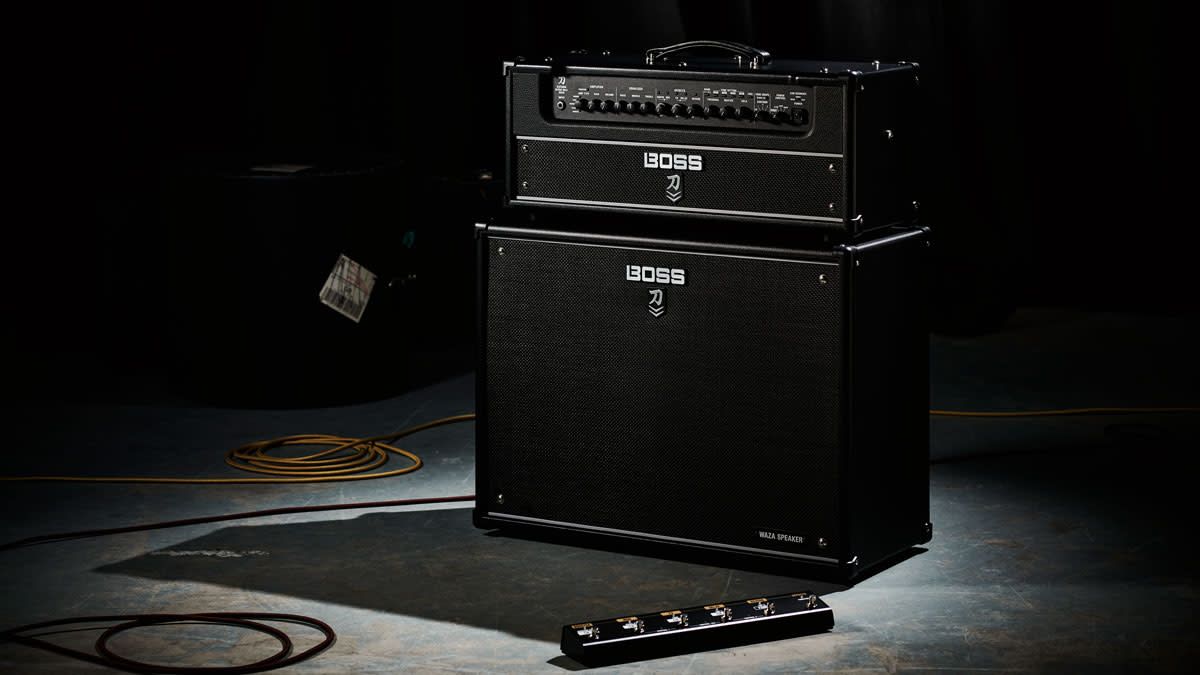
Now in its second evolution, Boss’s Katana range is securely established as the go-to digital modelling amp solution for many players at all levels, from beginners to professionals. Topping out the current range is the Katana-Artist II, with expanded features and speaker enclosures loaded with the Waza G12W loudspeaker.
The combo amp has been available for some time and, now, for those ready to stamp some real authority on their tone, Boss has introduced the Katana-Artist II head, together with a matching 2x12 G12W-loaded guitar cabinet.
This new head features similar visuals to the rest of the range, clad in smart black vinyl accented with silver trim and white control-panel graphics. The particle board case surrounds a robust open-ended steel tray chassis containing the Katana’s electronics, with a front-facing control panel that’s unique to the Artist amps.
As you might expect, the circuitry has very little in common with a conventional guitar amplifier and looks more like it could have come from one of Roland’s synthesizers. The components are mostly miniature SMD, with a large printed circuit board sat vertically behind the control panel and a horizontal main board toward the back of the chassis.
A number of proprietary Roland chips occupy the main board, including the ESC2 sound engine, which is common across a number of Roland products. Smaller boards support power supply and input components, while the dominant features are a massive heatsink for the output devices and a substantial mains transformer. There’s no universal mains input; our sample Katana‑Artist II is for 240 volts and cannot be switched to operate in other countries with different wall mains.
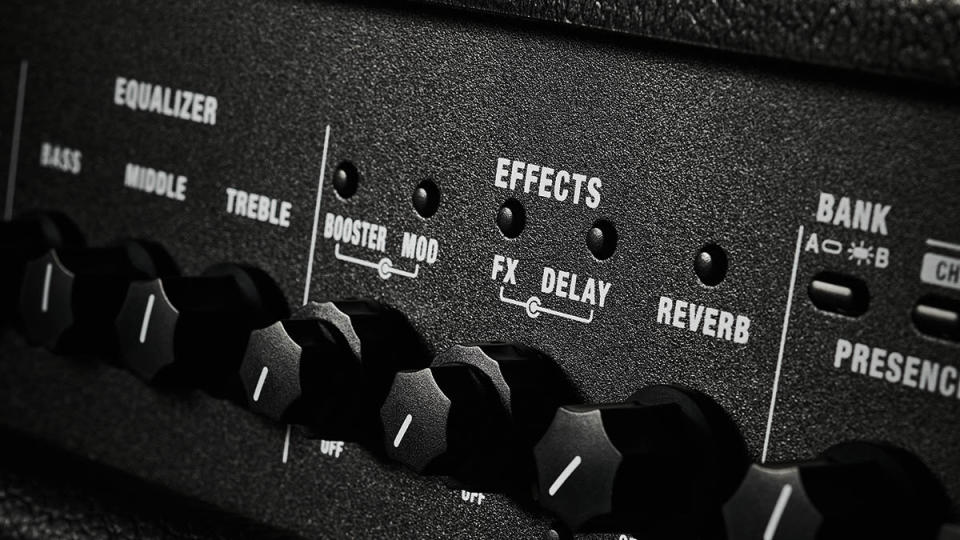
The control panel is logically laid out, with clear white screenprinting on a satin black background for high visibility. There’s a single input jack, followed by the amp-type rotary selector, which dials in one of five original Boss amp sounds: Acoustic, Clean, Crunch, Lead and Brown, this last one derived from the critically acclaimed Boss Waza head. A Variation button accesses five alternatives, for a total of 10 amp sounds.
Reassuringly standard-looking knobs handle gain, volume, bass, mid and treble functions, followed by level controls for the Katana’s built-in effects. Two pairs of dual-concentric knobs handle boost, modulation, effects (non-modulation stuff such as wah and octaver) and delay, with a third control knob for the Katana’s digital reverb.
There are 30 onboard effects slots, including six for reverb, split into two banks and grouped in three colour-coded slots for ease of recognition. The reverb slots can be combined with delay for more flexibility. Illuminated selector switches light up in different colours to tell you which effect is active, and there’s also a tap tempo button. The effects section is followed by controls for Presence, Master volume, Solo volume and Power Control, which switches the Katana’s output stage from a maximum 100 watts to 50 and 0.5 watts, with a standby/mute option.
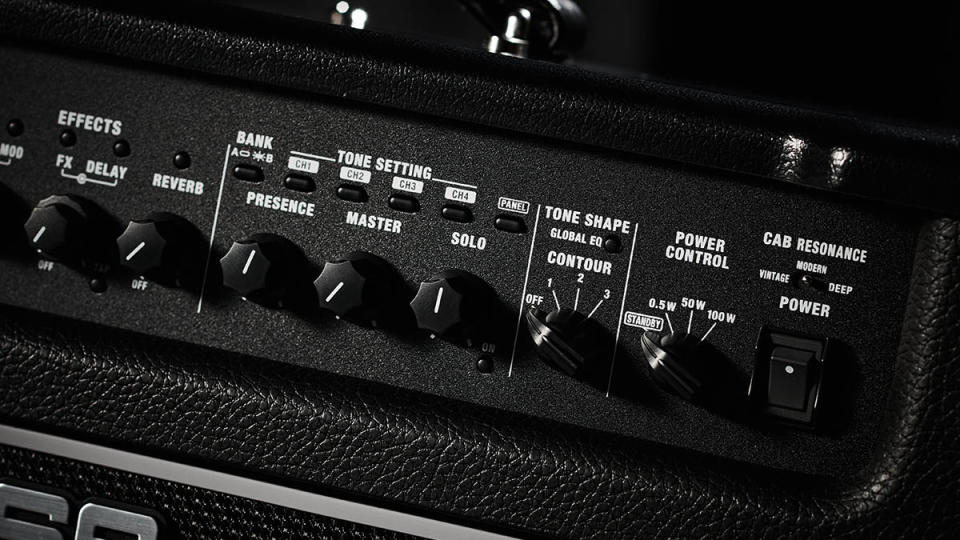
Over the top of these controls are the channel and bank selection buttons; the amp can store four channel patches in each of two banks for a total of eight presets. There’s also a handy button called Panel, which puts the Katana into manual ‘what you see is what you get’ mode.
The new-look Tone Studio is much improved, with crisp graphics and a reorganised screen that makes workflow quicker and more intuitive. This app is an essential part of the Katana experience
Moving toward the right-hand corner, you’ll find a Cabinet Resonance selector, and a Tone Shape selector that selects one of three EQ shapes, which are configured to taste in the Katana’s new improved Tone Studio partner app, with an on/off button for the Katana’s Global EQ.
Around the back are three speaker outlets, with jacks for an aux in, effects loop send/return, headphones/recording out and preamp line out/power amp in. Comprehensive footswitch control includes sockets for switching channels and banks plus an expression pedal, or you can attach the GA-FC/GA-FC EX foot controllers.
There’s also a stereo expansion switch that lets you link two Katana models to enjoy true stereo effects. A MIDI in socket lets you control the Katana-Artist II from a MIDI-compatible effects unit or foot controller, and, last but not least, a USB ‘B’ socket sends direct audio to your recording device, as well as providing desktop connection to the Tone Studio app, which has also received a makeover.
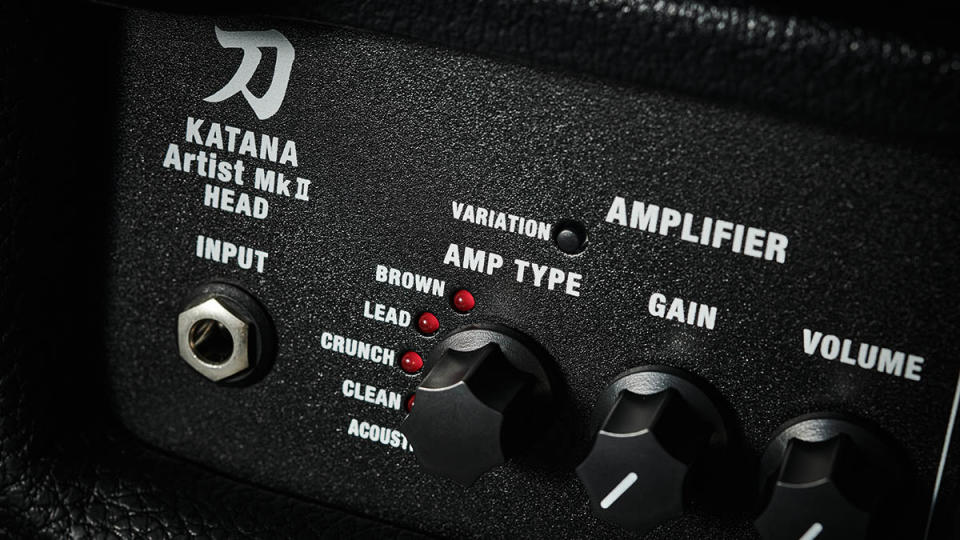
In fact, the new-look Tone Studio is much improved, with crisp graphics and a reorganised screen that makes workflow quicker and more intuitive. This app is an essential part of the Katana experience: besides mirroring all the front-panel controls, it’s where the effects parameters are edited, along with many other hidden features.
For example, alongside the standard bass, mid and treble tone controls there are three more EQs that can be assigned to different places in the signal chain and configured as 10-band graphic or dual-band parametric, with low and high mid swept frequency and variable Q, plus a dedicated Solo EQ. If that sounds like EQ overkill to you, we’d tend to agree.
However, you don’t have to use them. Other hidden features include a noise suppressor, a choice of signal chains and comprehensive USB, MIDI and footswitch configuration options.
Feel & Sounds
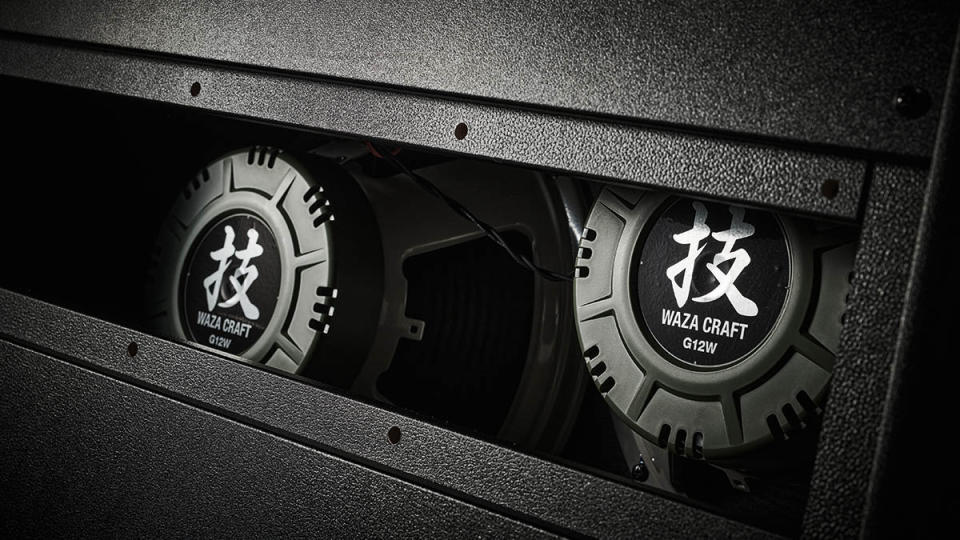
The Katana’s original amp voices aren’t modelled on any specific classic designs, although from what we know, parent company Roland’s Tube Logic research was initially inspired by vintage Tweed-era Fenders.
To our ears, there’s more than a little Tweed influence in the Artist II’s Clean, Crunch and Lead presets, while the Brown voice is lifted from the Boss Waza head and adds extra harmonics for a soaring lead sound with a vocal-like quality that’s great fun to play with.
New variation options double the number of voices, with more than enough choice to satisfy anyone. Leaving the Katana-Artist II’s formidable EQ and effects options aside to begin with and just tweaking the front-panel tone controls in Panel manual mode, there’s plenty of range to dial in single coils and humbuckers for spanky cleans, gritty crunch and fat leads that sit well in practically every genre.
Used as a straightforward guitar amp, the Katana-Artist II sounds authentically ‘real’
Used as a straightforward guitar amp, the Katana-Artist II sounds authentically ‘real’, with responsive overdrives and a wide dynamic range that’s helped by the 100-watt Class AB output stage and the matching 2x12 enclosure.
This is loaded with a pair of Boss’s G12W Waza loudspeakers, which replicate vintage ‘Greenback’ tone with significantly increased power handling. However, these premium drivers are no lightweights – so the single strap handle that’s fitted on top isn’t ideal for a bulky cabinet weighing almost 30kg.
As you’d expect from Boss, the effects are generally excellent, with many based on famous Boss and Roland hardware. There are over 60 to choose from in the Tone Studio app, with slots for 30 in the amp itself, including six for reverb.
New pedal effects include pitch shifter and wah choices, alongside lush choruses, flangers, rotary speaker sims, analogue and digital delays (including an excellent model of the classic 1983 SDE-3000) and five different reverb models, which can also be mixed with delay for extra versatility.
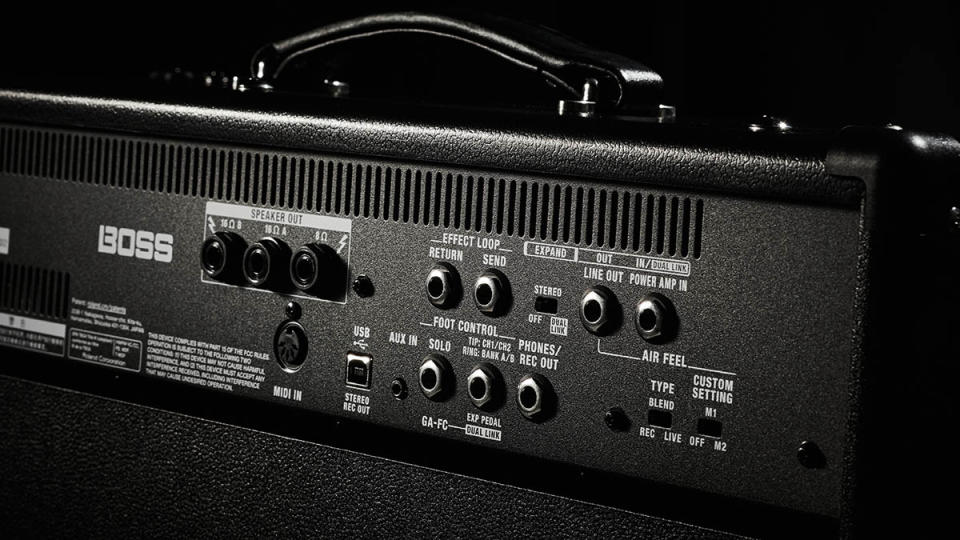
Using the effects with one EQ configured as a 10-band graphic, we were able to vary the amp and drive sounds to cover anything from blues to full-on metal, and easily recreate satisfyingly accurate versions of iconic recorded tones.
For live use, the Solo function has its own settings for volume, gain and EQ, making it easy to shift from funky rhythms to blazing leads, while the expansion function links two Katana-Artists, producing true stereo effects.
Users who want to spend more time playing and less time tweaking will also be pleased to hear there are plenty of ready-made presets available to download from Boss’s online Tone Central resource, which can be accessed directly through the Tone Studio app. These presets serve as an impressive demo of the Katana-Artist II’s considerable flexibility.
Verdict
Digital modelling has evolved to give guitarists practically any sound they can think of, although not every amp is equal when it comes to performance and some are a lot easier and more fun to work with than others.
With the Katana range, Boss has struck an almost perfect balance between user-friendliness, sonic potential and affordability, so it’s easy to see why the amps enjoy such universal popularity across the whole spectrum, from beginners and home users to weekend warriors and top-flight professional players.
It’s easy to see why the amps enjoy such universal popularity across the whole spectrum, from beginners and home users to weekend warriors and top-flight professional players
The ‘out of the box’ sounds are good enough to go straight on to recorded tracks, with all the programmability you could ask for in the new updated Tone Studio app. Aimed more at professionals, especially in head format, the Katana-Artist II has extra front-panel controls that add to its credentials as a serious performance tool, with plenty of power to handle any stage, large or small.
We think it’s great value for money as well, although the hefty 2x12 cabinet is an extra commitment and could do with more than a single carry handle. Nevertheless, the II head is definitely one to look at if you want everything the Katana experience can offer.
Specs
PRICE: $569 / £591
ORIGIN: Malaysia
TYPE: Digital modelling preamp and solid-state power amp
OUTPUT: 100W RMS, switchable to 50 and 0.5W
DIMENSIONS: 296 (h) x 631 (w) x 246mm (d)
WEIGHT (kg/lb): 12.4/27
CABINET: MDF
CHANNELS: 8 onboard presets in 2 banks of 4
CONTROLS: Amp Type, Gain, Volume, Bass, Middle, Treble, Booster/Mod level, FX/Delay level, Tap tempo, Reverb, Presence, Master Volume, Solo Volume, Contour select, Global EQ select, Power control, Cabinet Resonance, Line Out Air control. Bank A/B select, patch select x4
FOOTSWITCH: Solo footswitch, dual latching footswitch that changes between 2 channels and 2 banks, or GA-FC foot controller for full patch/effects and loop control, or MIDI
ADDITIONAL FEATURES: Switchable output power selection, speaker-emulated headphones/recording and line outputs, aux in, series/parallel effects loop, USB, MIDI In, power amp in, stereo expand select, ‘Air Feel’ select, 3 speaker outs (1x 8 ohm, 2x 16 ohm)
CONTACT: Boss

